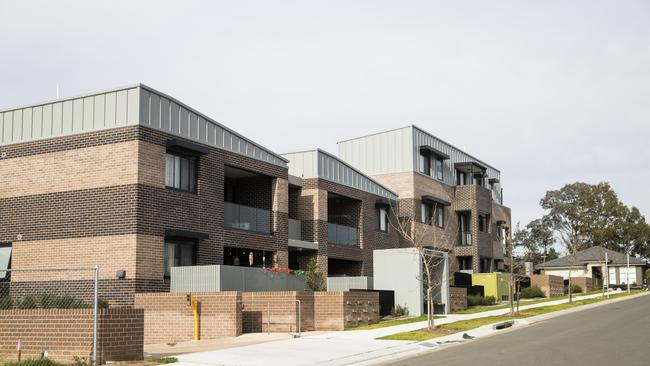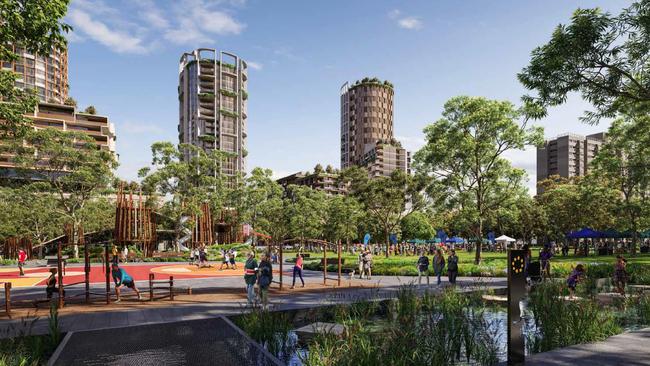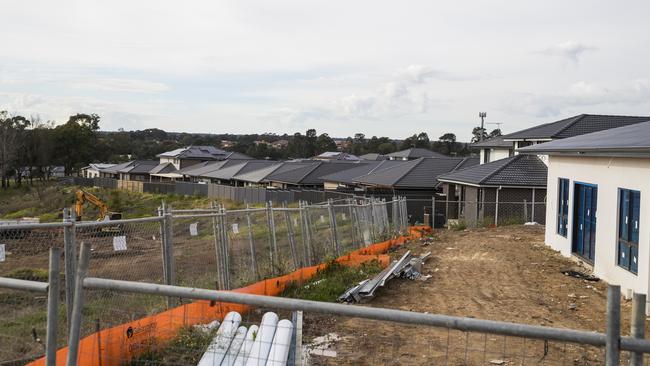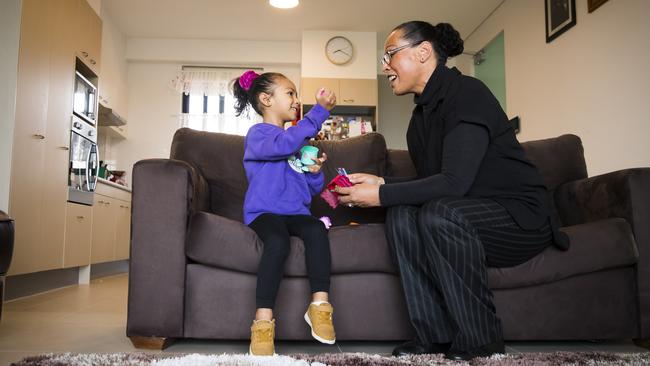Revealed: NSW suburbs with the most - and least - public housing
While the government continues to promote plans for a mix of private and public housing sprinkled across Sydney the reality is three key regions continue to attract more and more ‘housos’. SEE HOW MUCH PUBLIC HOUSING IS IN YOUR SUBURB
- Waterloo housing estate increases social housing numbers
- Sydney’s old ghettos: Airds, Claymore, Bonnyrigg Heights reborn
Western Sydney is still home to most new public housing, despite calls to spread it more widely across the city.
In the past decade the number of public housing dwellings — operated by either the state government or community housing providers — has increased dramatically in the council areas of Canterbury-Bankstown (484 additional dwellings), Fairfield (251) and Penrith (227).
These three areas already have among the most public housing in the state.
In regional NSW, Port Macquarie-Hastings (99) and Armidale (90) councils have seen the biggest spikes since 2010, NSW Land and Housing Corporation figures reveal.

But when it comes to the state government’s “salt and pepper” policy — where better quality public housing is sprinkled among private dwellings rather than being dumped in the one street or suburb — many council areas remain off-limits.
MORE FROM BEN PIKE:
Concrete kings of Sydney making footprints across city
Parramatta’s ‘Auto Alley’ scrapped for new high-rises
Ku-ring-gai’s public housing numbers dropped from 29 to 13 homes between 2010 and 2020, while Mosman (70), Woollahra (77) and The Hills (135) council areas have not grown their public housing footprint despite a decade-long construction boom.
North Sydney and Lane Cove also saw drops.
NSW LAHC CEO Michael Cassel said there can be stigma around new public housing developments.
“Sometimes you get some pushback when it comes down to the nitty-gritty and people say: ‘Oh, it is in my street’,” he said.
“A lot of that comes out of a stigma that everybody in social housing don’t work, are drug dependent or violent.
“There will always be a cohort that is like that but predominantly a lot of our tenants have a lot of pride in the places that they live in.”
Mr Cassel said the increasing popularity of long-term leases in private dwellings, known as build-to-rent, will lessen the stigma around public housing tenants.
New public housing developments have a dwelling mix of 70 per cent private and 30 per cent public.
LAHC has purchased some dwellings in government-backed projects such as the apartment towers over new Metro stations but normally redevelops existing assets rather than buying new — and expensive — land holdings.
The figures also hint at the City of Sydney’s gradual gentrification, with the number of public housing dwellings overall dropping by 342 in the past decade to 8771.
Sydney Lord Mayor Clover Moore’s council area still has the third-highest concentration of public housing in the state, however, behind Canterbury-Bankstown and Blacktown.
Housing Minister Melinda Pavey said she wants to continue to “have a mix of social, affordable and normal housing”.
“Through that way you are not identified as someone who is in social housing or to the Australian vernacular a houso,” she said.

Ms Pavey also defended the government’s decision to sell inner city public housing, a policy that has seen many public housing tenants moved from inner urban areas to the suburban fringe and regional locations.
This trend is expected to continue, with about 6900 heritage-listed public housing homes located in North Sydney, Sydney, Inner West, Willoughby and Bayside council areas.
Heritage properties are by far the most expensive to maintain, giving the government a strong incentive to sell.
“It’s not just about housing them in our suburban areas for less — that is where a lot of the jobs are,” she said.

Since March LAHC has completed or awarded contracts for 362 new dwellings, all of which are in western Sydney or regional NSW.
But not everyone is happy.
“It’s grossly unfair that public housing tenants are being placed in western Sydney; they are people with desperate needs who have low income,” Cumberland Council mayor Steve Christou said.
“When we put a large number of people with those needs in the one spot you start problem areas and can create ghettos.
“My issue is not with having public housing tenants; it is about a more fairer distribution across Sydney.”
Astrolabe Group demographer Dr Kim Johnstone said there has not been significant new public-housing built.
“This uneven spread highlights that there are differences across the city and we simply do not have people on low incomes living in all parts of our city,” she said.
“We are not going to see that diversity everywhere. People living in some of those places won’t be exposed to anybody on a low income.”
Over the next two years to June 2022, the NSW Land and Housing Corporation has plans for 1538 new dwellings at an estimated construction cost of about $550 million.
The LAHC’s new housing projects represents more than 28,000 new homes that are scheduled for completion throughout metropolitan Sydney and in areas of regional NSW.
Campbelltown in south west Sydney, which has the fifth-highest concentration of public housing in NSW, has undergone some of the biggest changes in the past decade.
With the renewal of Minto, Airds, Claymore and other public housing hot spots by LAHC and government land developer Landcom, there has been a 10 per cent (600 dwelling) reduction in the amount of public housing.
Alexandra Dauniika, 64, remembers her old public housing property being so cold in winter that she could see her breath when she spoke.

Now, after moving from Airds to a new property in Claymore, she is no longer embarrassed to have people over.
Claymore has gone from being a 100 per cent public housing suburb to one with 30 per cent public and 70 per cent private dwellings.
“I am happy that we were able to get a new place nearby to where my children grew up,” Mrs Dauniika, who works as a legal secretary and pays rent, said.
“It’s also a nice place to bring my granddaughter over to so she can play.
“Airds had deteriorated so much over the years but I can see now that was because they were waiting to put new housing in.”
Originally published as Revealed: NSW suburbs with the most - and least - public housing
